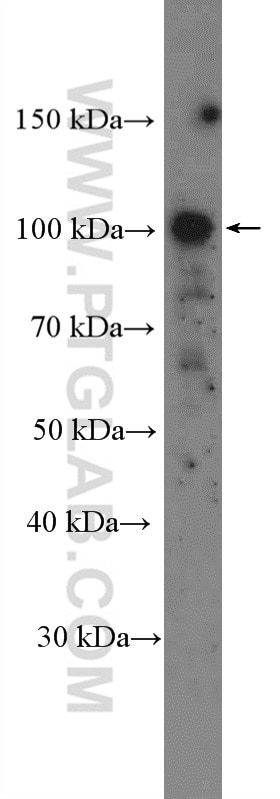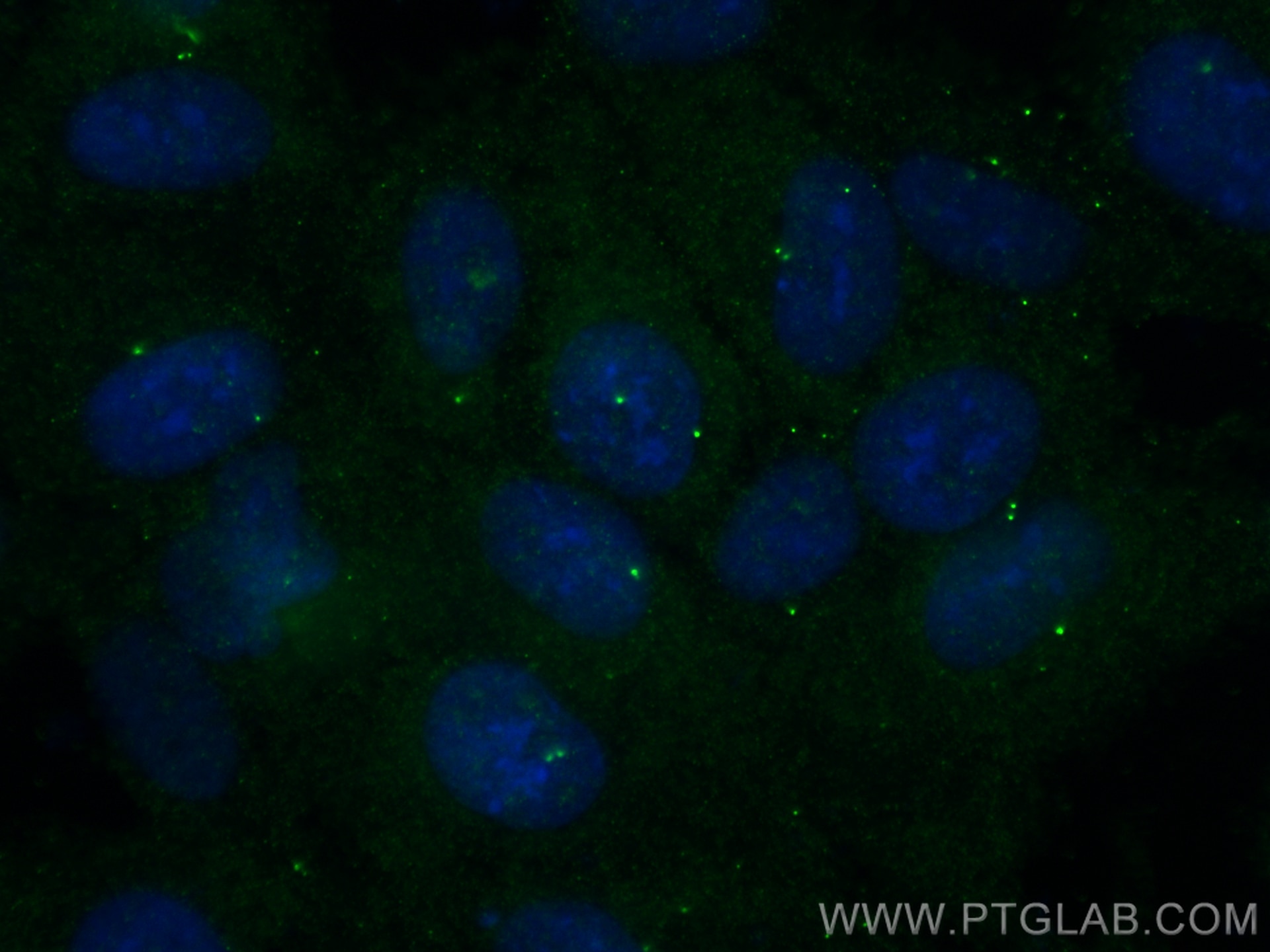CNTROB Polyklonaler Antikörper
CNTROB Polyklonal Antikörper für WB, IF/ICC, ELISA
Wirt / Isotyp
Kaninchen / IgG
Getestete Reaktivität
human, Maus
Anwendung
WB, IF/ICC, ELISA
Konjugation
Unkonjugiert
Kat-Nr. : 26880-1-AP
Synonyme
Geprüfte Anwendungen
| Erfolgreiche Detektion in WB | Maushirngewebe |
| Erfolgreiche Detektion in IF/ICC | hTERT-RPE1-Zellen |
Empfohlene Verdünnung
| Anwendung | Verdünnung |
|---|---|
| Western Blot (WB) | WB : 1:500-1:1000 |
| Immunfluoreszenz (IF)/ICC | IF/ICC : 1:50-1:500 |
| It is recommended that this reagent should be titrated in each testing system to obtain optimal results. | |
| Sample-dependent, check data in validation data gallery | |
Veröffentlichte Anwendungen
| WB | See 1 publications below |
| IF | See 4 publications below |
Produktinformation
26880-1-AP bindet in WB, IF/ICC, ELISA CNTROB und zeigt Reaktivität mit human, Maus
| Getestete Reaktivität | human, Maus |
| In Publikationen genannte Reaktivität | human |
| Wirt / Isotyp | Kaninchen / IgG |
| Klonalität | Polyklonal |
| Typ | Antikörper |
| Immunogen | CNTROB fusion protein Ag25454 |
| Vollständiger Name | centrobin, centrosomal BRCA2 interacting protein |
| Berechnetes Molekulargewicht | 903 aa, 101 kDa |
| Beobachtetes Molekulargewicht | 60-70 kDa, 100-130 kDa |
| GenBank-Zugangsnummer | BC021134 |
| Gene symbol | CNTROB |
| Gene ID (NCBI) | 116840 |
| Konjugation | Unkonjugiert |
| Form | Liquid |
| Reinigungsmethode | Antigen-Affinitätsreinigung |
| Lagerungspuffer | PBS with 0.02% sodium azide and 50% glycerol |
| Lagerungsbedingungen | Bei -20°C lagern. Nach dem Versand ein Jahr lang stabil Aliquotieren ist bei -20oC Lagerung nicht notwendig. 20ul Größen enthalten 0,1% BSA. |
Protokolle
| PRODUKTSPEZIFISCHE PROTOKOLLE | |
|---|---|
| WB protocol for CNTROB antibody 26880-1-AP | Protokoll herunterladen |
| IF protocol for CNTROB antibody 26880-1-AP | Protokoll herunterladen |
| STANDARD-PROTOKOLLE | |
|---|---|
| Klicken Sie hier, um unsere Standardprotokolle anzuzeigen |
Publikationen
| Species | Application | Title |
|---|---|---|
J Cell Biol The central scaffold protein CEP350 coordinates centriole length, stability, and maturation | ||
Elife Global cellular response to chemical perturbation of PLK4 activity and abnormal centrosome number. | ||
Mol Biol Cell The SON RNA splicing factor is required for intracellular trafficking structures that promote centriole assembly and ciliogenesis. | ||




